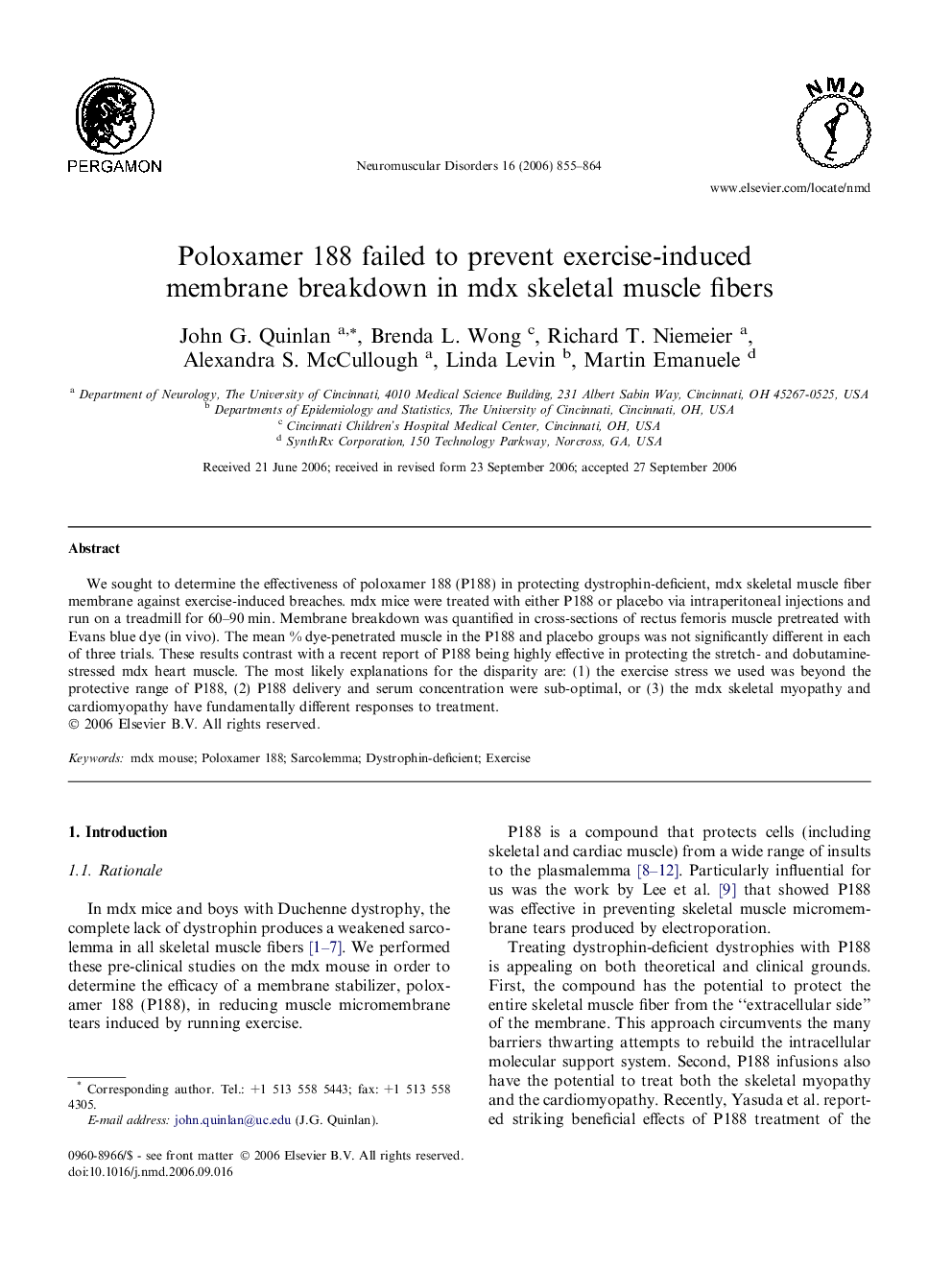| Article ID | Journal | Published Year | Pages | File Type |
|---|---|---|---|---|
| 3081723 | Neuromuscular Disorders | 2006 | 10 Pages |
Abstract
We sought to determine the effectiveness of poloxamer 188 (P188) in protecting dystrophin-deficient, mdx skeletal muscle fiber membrane against exercise-induced breaches. mdx mice were treated with either P188 or placebo via intraperitoneal injections and run on a treadmill for 60-90Â min. Membrane breakdown was quantified in cross-sections of rectus femoris muscle pretreated with Evans blue dye (in vivo). The mean % dye-penetrated muscle in the P188 and placebo groups was not significantly different in each of three trials. These results contrast with a recent report of P188 being highly effective in protecting the stretch- and dobutamine-stressed mdx heart muscle. The most likely explanations for the disparity are: (1) the exercise stress we used was beyond the protective range of P188, (2) P188 delivery and serum concentration were sub-optimal, or (3) the mdx skeletal myopathy and cardiomyopathy have fundamentally different responses to treatment.
Related Topics
Life Sciences
Neuroscience
Developmental Neuroscience
Authors
John G. Quinlan, Brenda L. Wong, Richard T. Niemeier, Alexandra S. McCullough, Linda Levin, Martin Emanuele,
